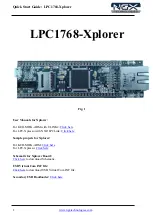
Installation
Do you need a PhD to install the OS?
The NOOBS operating system installation is as easy
as copying files onto your SD card.
The installation of an operating system
image is fairly well documented, as per
the area on the Raspberry Pi site titled
Guide for beginners
which can be found
here:
goo.gl/53xgp
, along with the simple
installation routine of using either
dd
on
Linux, or with the new NOOBS image you
simply unzip the image download and copy
the files onto a blank formatted microSD
card in Windows. The process is relatively
painless, it’s what happens after you insert
the microSD card into the Raspberry Pi
and apply some power that the fun starts.
The six operating systems on the NOOBS
card – Raspbian, Risc OS, Arch Linux,
OpenELEC, RaspBMC and Pidora – each
have their own nuances, and methods by
which to install and provide the user with
a base working graphical desktop. While
having a GUI isn’t absolutely necessary, it
does cover the large percentage of users
who are new to Linux. That being the case,
the definition of ‘installation’ must include
getting to the point whereby the new user
can recognize the operating system as
they would a standard Linux desktop – in
other words, be presented with a graphical
user interface. In a world where easing
the user into the bath water of Linux is
paramount,
Raspbian
has the most user
friendly desktop, but the other offerings
have just as good a start for the user.
Risc OS
, for example; once transferred
to the SD card and booted, we are rapidly
launched into a colorful and friendly
GUI, with relatively detailed messages
informing us of any issues during the
initial boot and setup. From here, we can
simply click on the ‘Configure’ icon and
begin to alter any settings we see fit.
Arch Linux
for the RPi is a different beast,
booting the user into a terminal environment
and leaving them to download, install
and configure their OS. Arch, once fully
appreciated, is one of the best operating
systems available, but it takes some
tweaking to get to a standard desktop.
OpenELEC
is the simplest version of XBMC,
starting directly into the XBMC GUI without
any additional configuration required.
RaspBMC
makes it easy for you, once
you select this operating system you
are taken directly to the GUI, no scary
terminal prompts to deal with. Once
you have completed the configuration
screens and RaspBMC has checked
for updates, you will be ready to go.
Pidora
which is a remix of the Fedora Linux
distribution is fairly easy to configure. Once
you select this O/S, you will be presented
with several configuration screens and then
the desktop will load. One thing to watch
out or here is the terminal commands are
a little different than the other operating
systems (distros in Linux language). The
foundation that compiled Pidora has
a good tutorial here
bit.ly/1piC2LA
.
In summary, Raspbian would be the easiest
to use and has the most support from
the Raspberry Pi Foundation. OpenELEC
offers the most media support if that is
the route you would like to go. The other
operating systems all have their advantages
and disadvantages. It is up to you to
decide which way you would like to go.
6
Raspberry Pi User Guide.indd 6
08/07/2014 14:44







































